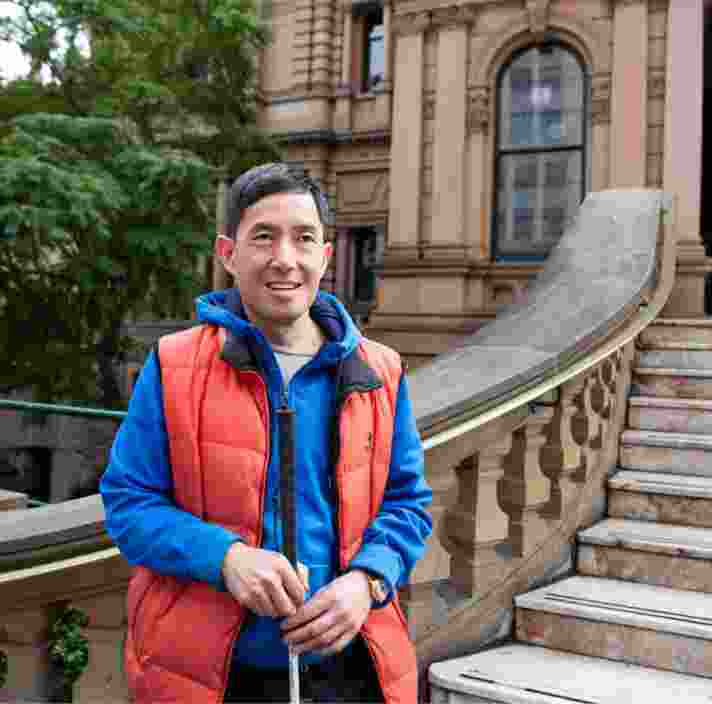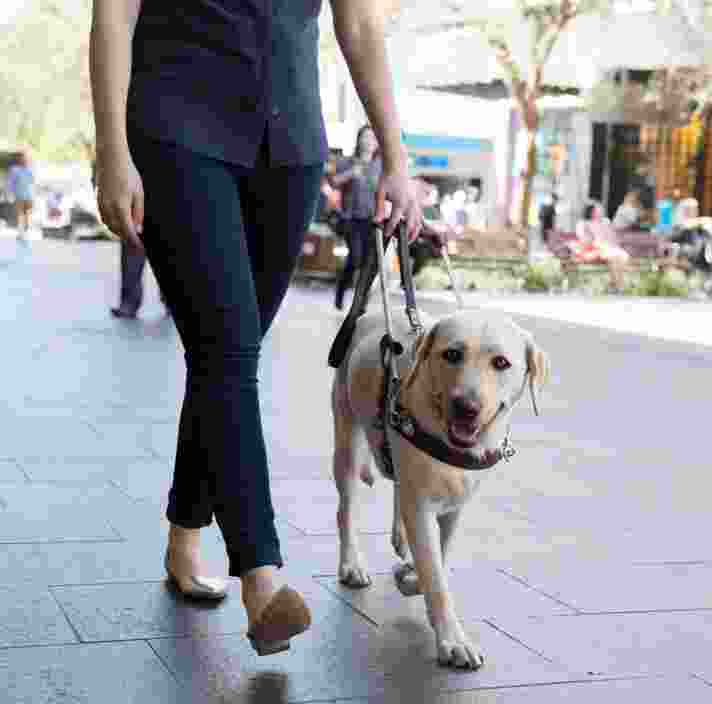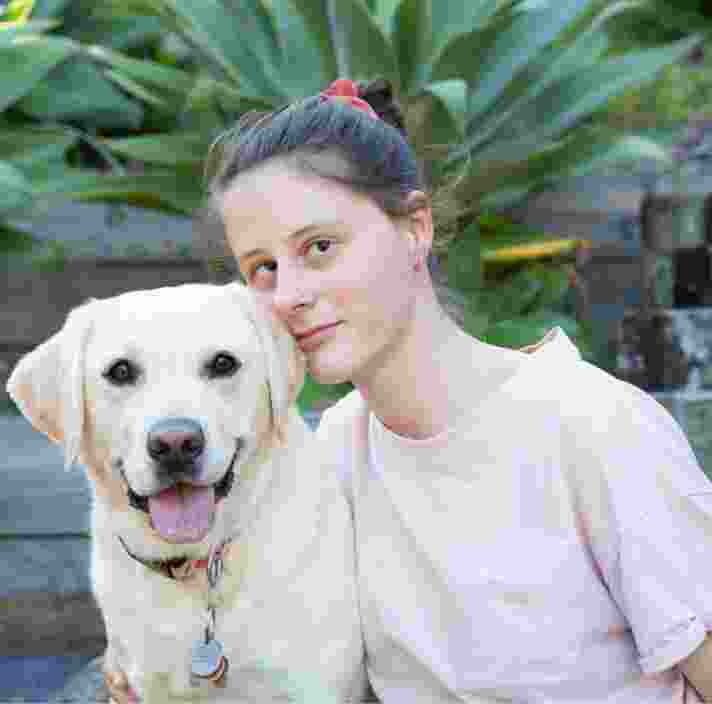About low vision in Victoria
Fact Sheet
There are over 220,000 people with blindness or low vision in Victoria. This number is expected to increase to more than 350,000 people by the year 2020.
Low vision can impact wellbeing in many different ways, depending on when a person experiences vision loss. People with low vision can be more at risk of hazards and accidents, become prone to anxiety, lose their confidence in navigating the community, and experience other mental or emotional difficulties.
However, with comprehensive support and training, a person with low vision can increase their independence. Through specialised training, people with low vision can live fulfilling lives, be active in the community, go to school, work or university, and achieve their goals.

About Guide Dogs Australia.
Fact Sheet
- The Guide Dogs movement started in Australia in 1951.
- The first Guide Dog to be trained in Australia was a Kelpie/Border Collie cross.
- Named Beau, he travelled around the country promoting Guide Dog awareness with his mobility partner, Mrs Elsie Mead.

About our services
Fact Sheet
- Guide Dogs Victoria helps about 1200 people with low vision across the state each year.
- All our services are provided free to people who need them.
- We provide people with aids to help them navigate. These include our beloved Guide Dogs, white canes, and other mobility aids.
- Most people learn how to use a cane before getting a dog. Some people may not want a dog, or be allergic to them.
- Orientation and Mobility Training helps people learn how to navigate their environment using aids, assistive technology like GPS trackers or phone reading apps, and how to use landmarks and cues, like the tactile bumps that occur at road crossings.
- Anyone can begin Orientation and Mobility Training at any time, from new born babies to people in their nineties.
About Guide Dog training
Fact Sheet
- It takes two years and $50,000 to breed, raise, train and match a suitable Guide Dog with a person with low vision.
- Guide Dog Puppies leave their parents at the age of two months. They spend the first year of their lives with a volunteer puppy raiser learning basic obedience and getting used to different environments: sounds, other dogs and people.
- Assessment begins at 14 months. If dogs pass this assessment they enter into a 5 month intensive training program and train to become a fully-fledged working Guide Dog.
- You can help the training process by raising funds, sponsoring a pup through Puppy Pals, or volunteering.
Guide Dog etiquette
Fact Sheet
- Legally, a Guide Dog can go anywhere the person with the dog can go.
- When working in harness, a Guide Dog should not be touched, fed or distracted from guiding its handler. This can detract from the dog’s work.
- Avoid grabbing a person with a Guide Dog or the dog’s harness. First ask if they need assistance.

Non-working Guide Dogs
Fact sheet
- Guide Dogs do get to enjoy some down time! When a handler is not working their Guide Dog they will generally take off the dogs harness and allow the dog to relax.
- Many Guide Dogs assume more of a family pet role once they are home and finished work for the day.

Ready to continue?
Seems like you have filled this form earlier. Let’s pick up where you left off.

